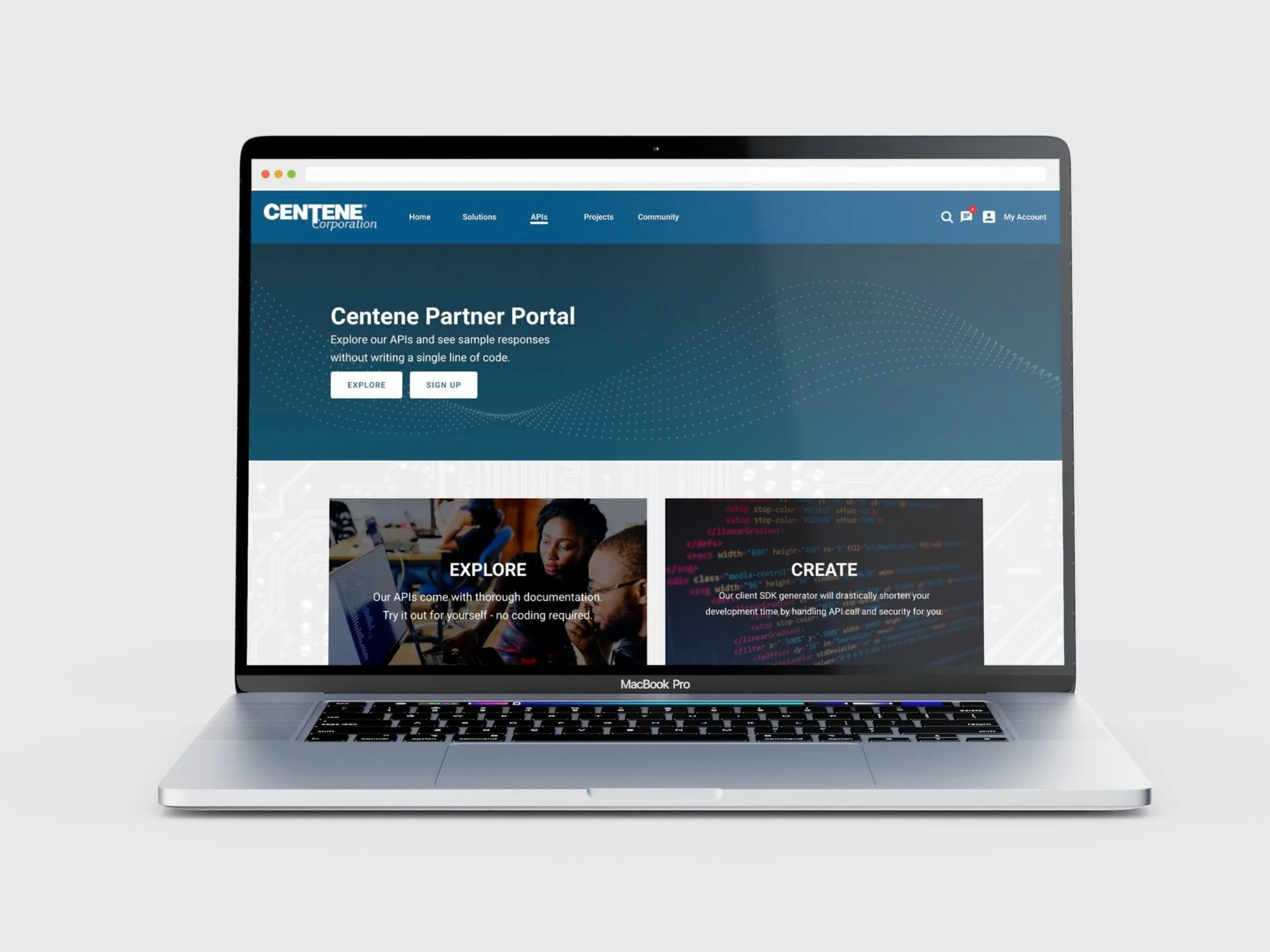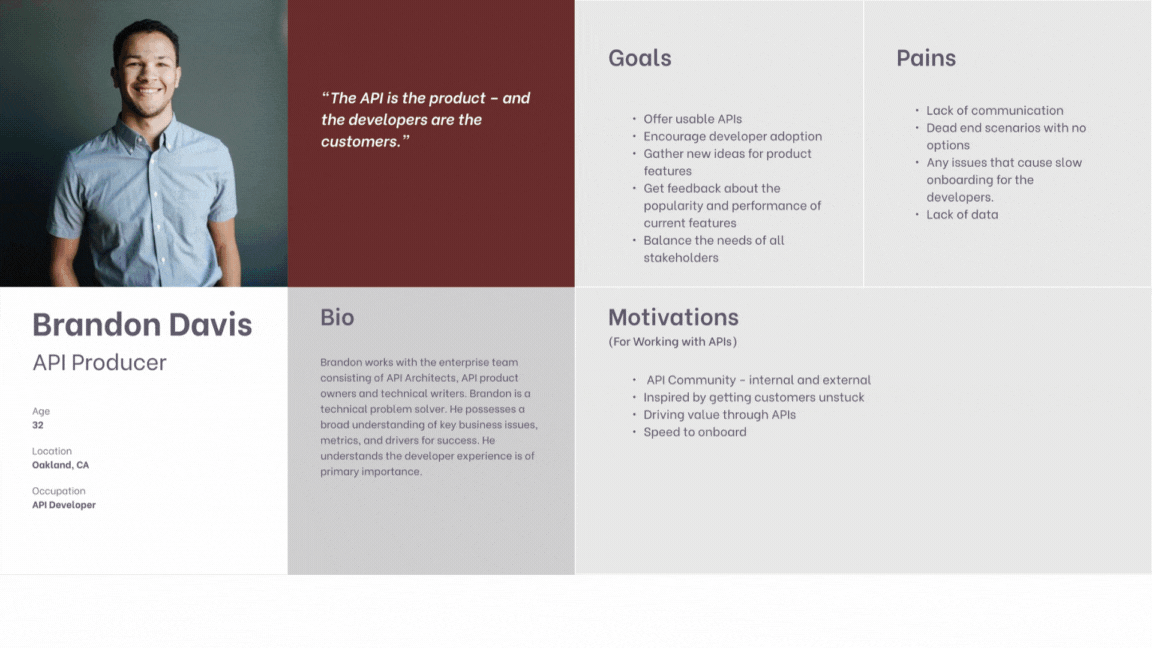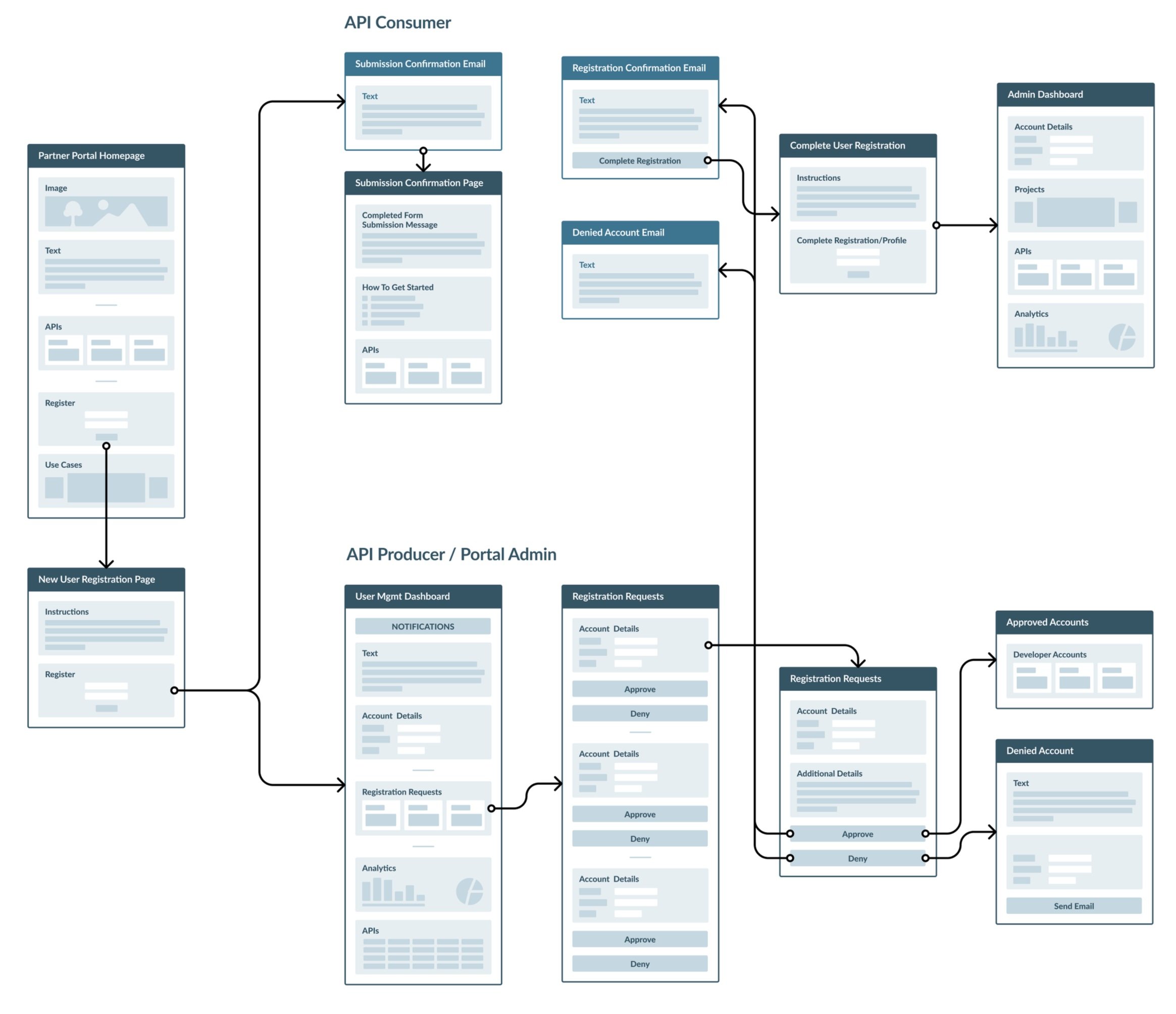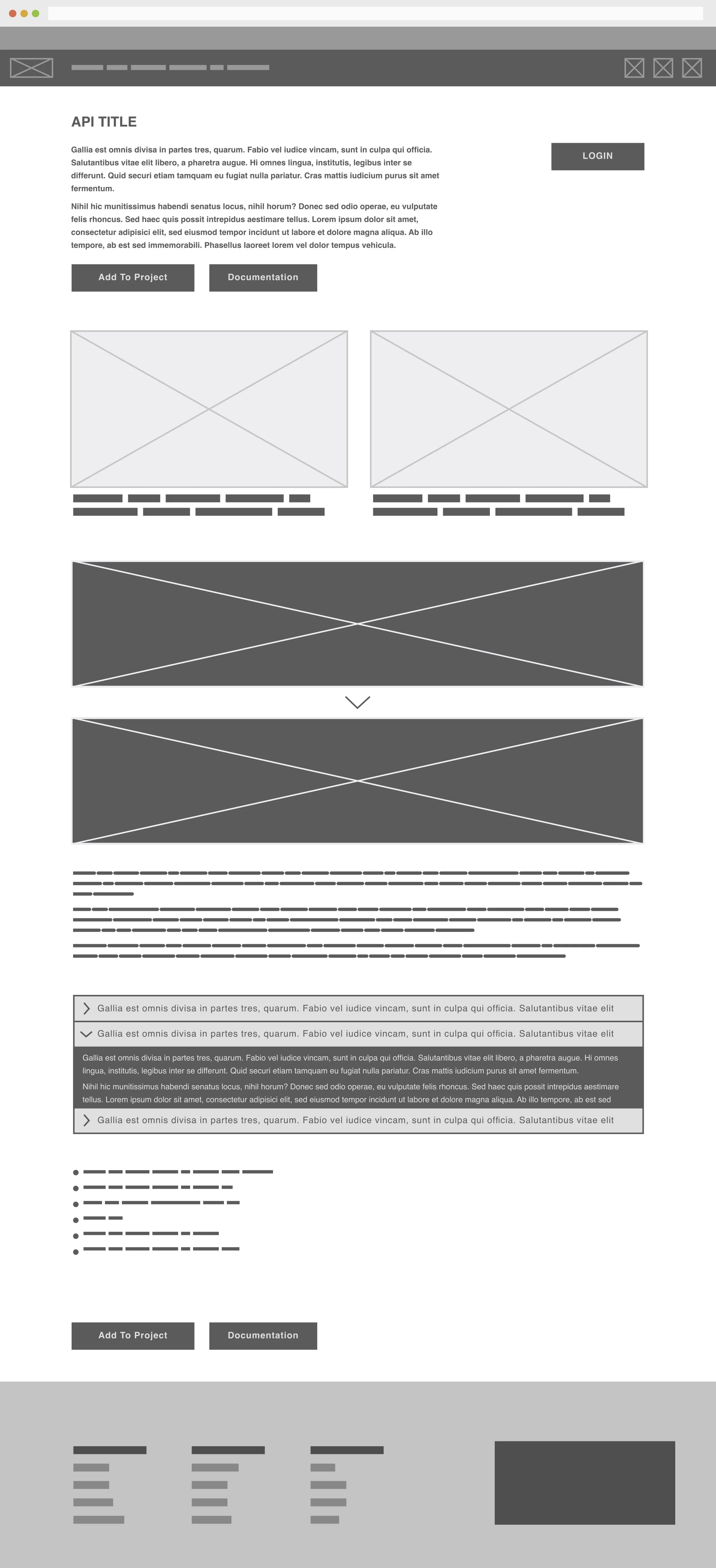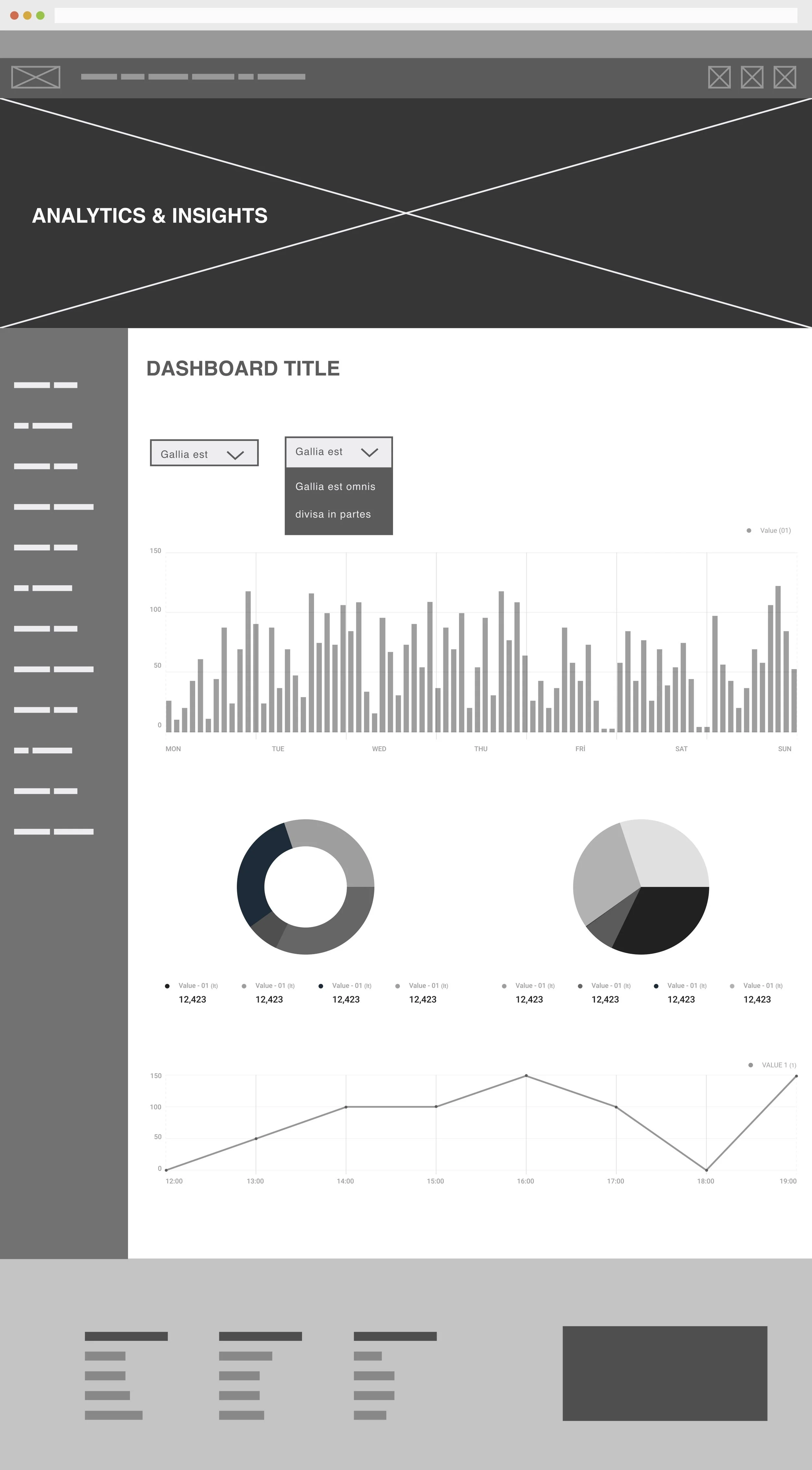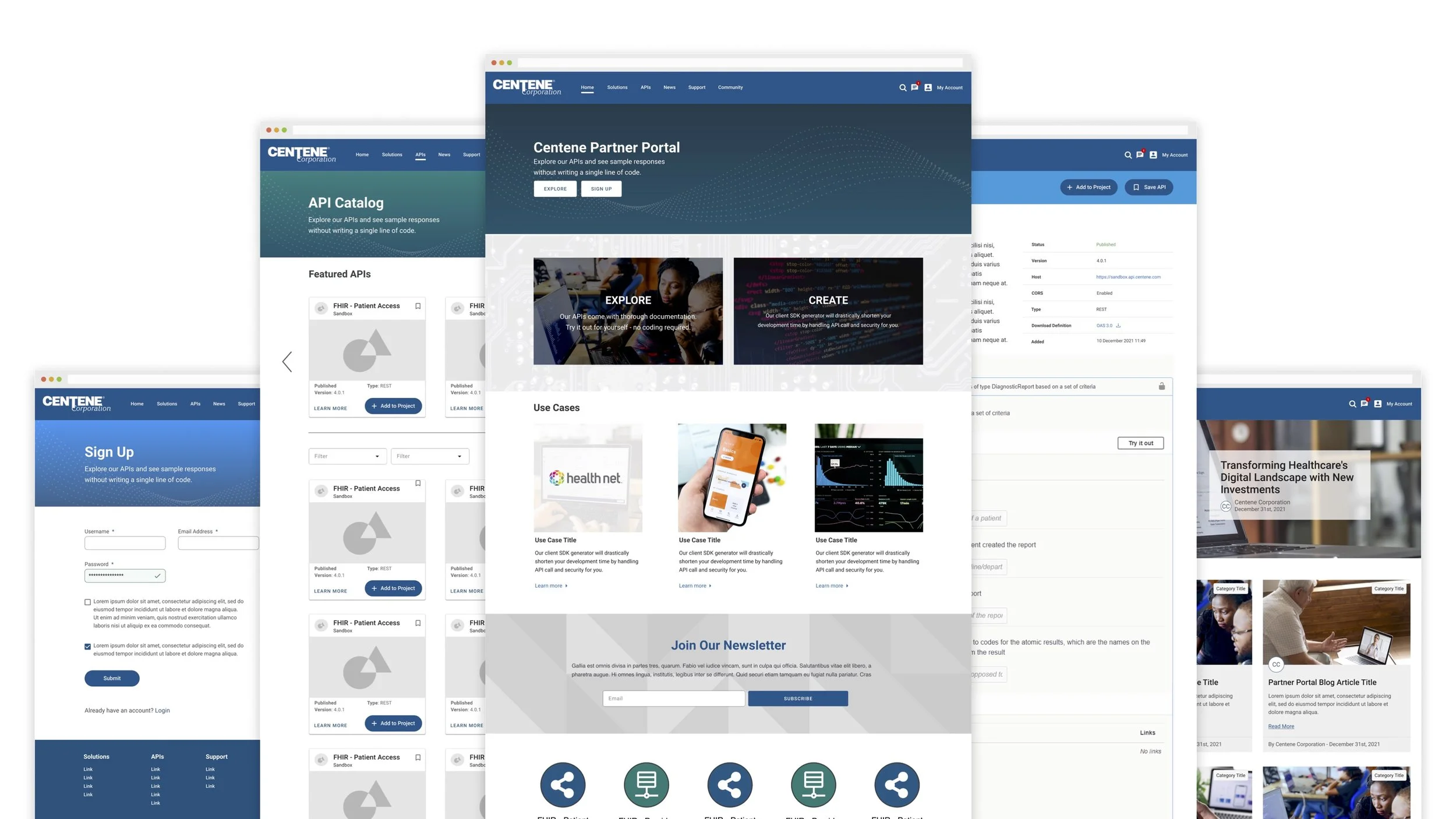Developer Portal for API Access and Documentation
Designing a Centralized Experience to Empower Business Leaders and Developers with API Information and Seamless Access
My Role
Lead UX Designer
Duration
6 Months
Team
Product Owner, UX Designers, UX Researchers, Lead Engineer
Overview
Centene’s decentralized API ecosystem — a result of acquisitions and siloed development — led to inconsistent governance, duplicated efforts, and rising maintenance costs. Without a centralized platform, internal teams and partners faced delays accessing APIs and lacked visibility into existing capabilities.
I served as the Lead UX Designer for the Centene Partner Portal, a new enterprise solution to centralize API documentation, automate credentialing, and standardize publishing workflows. I was responsible for defining the user experience strategy, aligning business goals with developer needs, and designing a scalable, user-centered platform that improved efficiency across the organization.
The Challenge: Fragmentation, Delays, and Inefficiencies
Centene’s lack of a centralized API governance model led to major usability and operational issues:
Onboarding Delays
Credentialing often took 2–3
weeks, slowing development
and integration.
No Standards
Inconsistent documentation and publishing workflows varied across teams.
Poor Discoverability
Developers lacked a single source of truth, making reuse and collaboration difficult.
My Process & Contributions
Stakeholder Interviews
To understand the scope of Centene’s API challenges, I conducted stakeholder interviews with internal teams (API producers, product owners, and developers) to identify pain points and opportunities:
For Centene
The absence of governance led to duplicated efforts and higher operational costs. A centralized solution could optimize support resources and improve scalability.
For API Consumers
No centralized API catalog meant missed opportunities to leverage existing APIs, and inconsistent credentialing processes created friction in implementation.
Automate API access credentialing to eliminate manual inefficiencies
Standardize API publishing workflows to improve governance
For API Producers
No standardized approach to API publishing, documentation, or credentialing led to inefficiencies and security concerns.
These insights informed our high-level requirements:
Enhance developer collaboration through a centralized API platform
User Persona Development
Developing user personas created a clear understanding of the portal's target users. By crafting detailed personas representing different stakeholders, I was able to empathize with their needs, preferences, and pain points. This deep understanding enabled me to tailor the portal's features, navigation, and content to meet the diverse requirements of each persona, resulting in a more intuitive and user-friendly experience. Additionally, personas helped align stakeholders and guide decision-making throughout the design process, ultimately leading to a developer portal that effectively served its intended audience within the healthcare industry.
Mapping Journeys & Flows
To guide design decisions, I created both user journey maps and user flow diagrams. Journey maps helped me visualize the end-to-end experience across different personas, highlighting pain points, key interactions, and opportunities for improvement. User flows allowed me to zoom in on specific tasks—such as API discovery or credentialing—to ensure efficient, intuitive pathways through the portal.
Together, these tools informed feature prioritization, revealed navigation challenges, and shaped a developer experience aligned with user goals and business requirements—critical in the complex landscape of enterprise healthcare.
Lo Fi Wireframes
These wireframes served as a skeletal outline of the portal's layout and functionality, allowing me to quickly iterate and visualize design concepts without getting bogged down in detail. By focusing on the basic structure and flow of the portal, low-fidelity wireframes facilitated early feedback and collaboration with stakeholders, ensuring that key usability considerations were addressed before investing time and resources in high-fidelity design. This approach helped in identifying and resolving potential usability issues, refining the user experience, and ultimately delivering a more effective and user-friendly developer portal tailored to the needs of healthcare industry stakeholders.
Hi Fi Mocks
High-fidelity mocks added visual detail and polish to the wireframes, providing stakeholders with a realistic preview of the final product's appearance and functionality. This level of fidelity allowed for more accurate user feedback and stakeholder buy-in, as they could better visualize how the portal would look and behave. Additionally, high-fidelity mocks would help in conducting usability testing to validate design decisions and identify any remaining issues before proceeding to development. By iteratively refining the design through high-fidelity mocks, I was able to ensure that the developer portal met the needs of the stakeholders while delivering a visually appealing and user-friendly experience.
Outcomes & Reflections
Although I transitioned to a new project before the portal's full launch, early testing and development indicated major improvements: API credentialing times were reduced from 2–3 weeks to near-instant access. The centralized portal also provided a scalable foundation for improved API governance, standardization, and collaboration across Centene’s teams.
One of the key design insights was recognizing parallels between API discovery and e-commerce patterns. By treating the API catalog like a product listing and the API detail pages like product detail pages, I was able to create familiar, intuitive experiences that accelerated usability for both technical and non-technical users.
Leading the UX design for this enterprise portal reinforced the value of early stakeholder alignment, user journey mapping, and scalable information architecture—especially when solving complex problems in large organizations.
